Gardening tips: how to properly trim raspberries for the winter
Berries raspberries They are distinguished by high indicators of usefulness and often save from influenza and SARS in the winter. In addition, it is very tasty and children eat it with pleasure. But in order for raspberry bushes to bear fruit well every year, you need to follow a number of care rules and properly prepare raspberries for the winter cold.
When planning to plant raspberries, it is important to understand that the plant needs not only to be watered, but also to provide full care and wintering conditions. Otherwise, the berries are soon crushed and the variety will degenerate. Pruning is also a maintenance measure.
Content:
- Benefits of pruning raspberries for the winter
- Types and rules of pruning
- Raspberry pruning according to Sobolev
- Proper preparation of raspberries for wintering
Benefits of pruning raspberries for the winter
Many varieties raspberries begin to produce crops in the second year of life. But this does not apply to remontant varieties, in which the fruiting period occurs in the year of planting. Therefore, after two years of yield, the strength of the plant is depleted.
To restore them and allow young and strong fruitful shoots to grow, old depleted branches must be removed. Such actions will make it possible to get a stable harvest of high-quality berries.
The main pruning is carried out before winter and has a number of advantages:
- Thinning the plantings allows you to increase the size and quality of the berries.
- Pruning prevents breeding pests.
- Prophylaxis diseases.
- The purpose of pruning is to stimulate the growth of new shoots, on which the lion's share of flower buds is laid.
- Cutting old and diseased branches helps to improve the health of the raspberry plantation and prevents its growth beyond the allotted boundaries.
Types and rules of pruning
To get high-quality and plentiful harvests every year, you need to take care of the raspberry garden. In addition to abundant irrigation and timely fertilization, raspberry bushes need competent pruning.
There are several types of raspberry pruning:
- Primary. Carried out at landing. Shoots are cut, leaving 30-40 cm from the ground. The purpose of the exercise is to stimulate the growth of new shoots. If you do not prune during planting, then the harvest will be poor and new shoots will not grow, that is, there will be nothing to replace the old ones.
- Standard. At the end of summer, the fruit-bearing stems dry out and they require removal. Young stems should be cut at the same time if too many of them have grown. It is customary to leave from six to ten shoots on the bush. In the autumn, before the first frosts or in the spring of the next year, the upper parts of the annual shoots are to be pruned. This is necessary to get rid of the unripe parts on which the weak kidneys are located. After collecting the entire harvest of berries, you need to remove the sprouted shoots. This will provide enough light for the development of replacement shoots, into which the nutrients necessary for the growth of aboveground and underground stems rush. The annual shoots left for harvesting are slightly shortened, removing unripe tops with underdeveloped buds. This contributes to the formation of a full-fledged harvest from high-quality berries that ripen at the same time. Trimming the tops is recommended in the spring.When cutting out old shoots, it is necessary to remove weakened, undeveloped or damaged stems - rationing of plantings. And in the spring, the final normalization is carried out, leaving only healthy and strong stems with an interval of 25 cm.
- Sanitary. With this pruning, damaged and diseased branches are removed, as well as dead wood, which must be cut at ground level so that harmful insects and spores of fungal diseases do not spread.
Raspberry pruning according to Sobolev
The purpose of this pruning is to stimulate the branching of the raspberry bushes, which helps to increase the fruitful branches. In late spring or early summer, when annual stems reach a meter in height, their tops must be pinched by 15 cm.This will give an impetus to branching of the shoot, which by autumn will form another 5-6 lateral shoots. In the spring, after the leaves bloom, the autumn shoots are pinched by 10-15 cm, and the top of the main shoot does not need to be touched.
This stimulates the formation of additional lateral branches that will yield the harvest.
With this pruning, by August, the raspberry bushes will be completely covered with berries. Fruiting will continue until September. Correct pruning according to Sobolev will allow:
- adjust the timing of the appearance of fruits of common varieties to remontant
- increase the number of fertile buds
- get a higher yield
Before leaving raspberries for the winter, you need to carry out sanitary pruning, removing diseased and immature shoots. Double pruning will increase the yield if:
- the whole set of techniques is correctly performed agrotechnics starting with planting, watering and fertilizing
- excessive density of raspberry plantings is not allowed
Proper preparation of raspberries for wintering
They begin to prepare raspberries for wintering in the summer. Do not exceed the recommended rate of nitrogen fertilizers, because their excess reduces the frost resistance of raspberry bushes. And potassium-phosphorus dressings help raspberries withstand frost. For protection root system from freezing, the soil must be mulched, which contributes to the preservation of moisture and heat in the soil. Peat should be used as mulch, but if there is none, you can use rotted straw or fallen leaves.
It is undesirable to use coniferous litter, because it increases the acidity of the soil, which raspberries do not like.
The mulch layer should not exceed fifteen centimeters, otherwise the roots may rot. These activities should be carried out before frost. Before wintering, the raspberry plantation must be properly watered so that the moisture supply is sufficient for the whole winter. In order to prevent the shoots from freezing, they are bent to the ground and fixed as low as possible. Bending down should be done after shedding foliage. To facilitate the task, you can dig in the stakes and pull a wire on them twenty centimeters from the surface of the earth. The bent stems should form arcs.
The best cover is snow cover. Even before the frost begins, Mother Nature covers the bent stems with a white blanket. If this does not happen, the plant may freeze out. If there are no snowy winters, then you need to provide shelter for the raspberry tree with improvised means. You can use dry foliage or build a frame. You can also build a kind of greenhouse by turning over wooden boxes and pulling a film cover over them. But you need to leave access to oxygen so that raspberries did not shut up. To trap snow, fences made of plywood and similar materials should be installed on the leeward side. And if raspberries grow in regions where winters have little snow, then the plantings need to be covered with non-woven fabric.
More information can be found in the video:





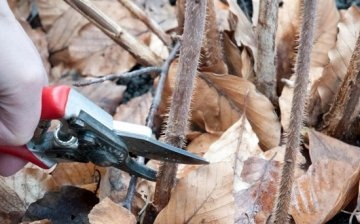
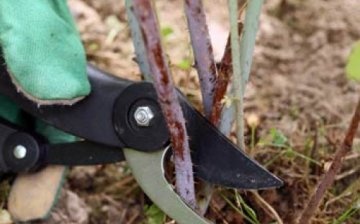






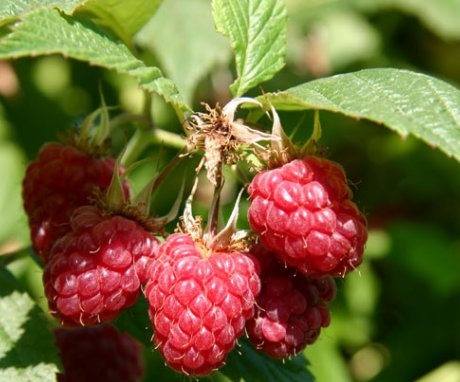

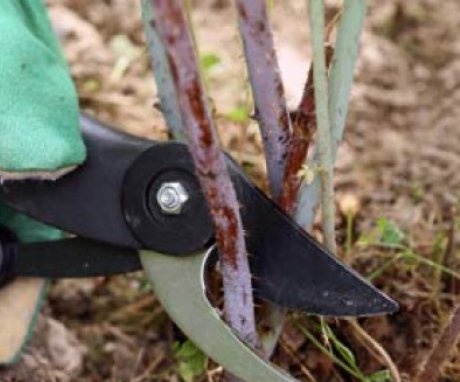
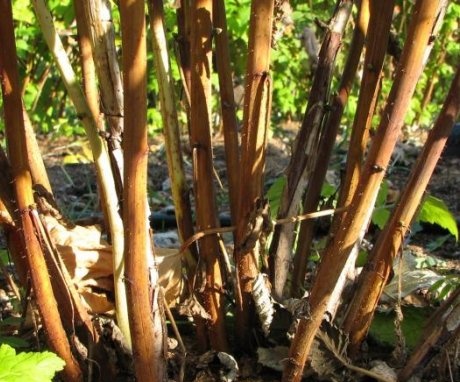
We always pruned in the fall, only old, dry raspberry stalks, and young shoots were not thinned out. Therefore, apparently, and the harvest of berries were small. This year I will do as recommended in this article.